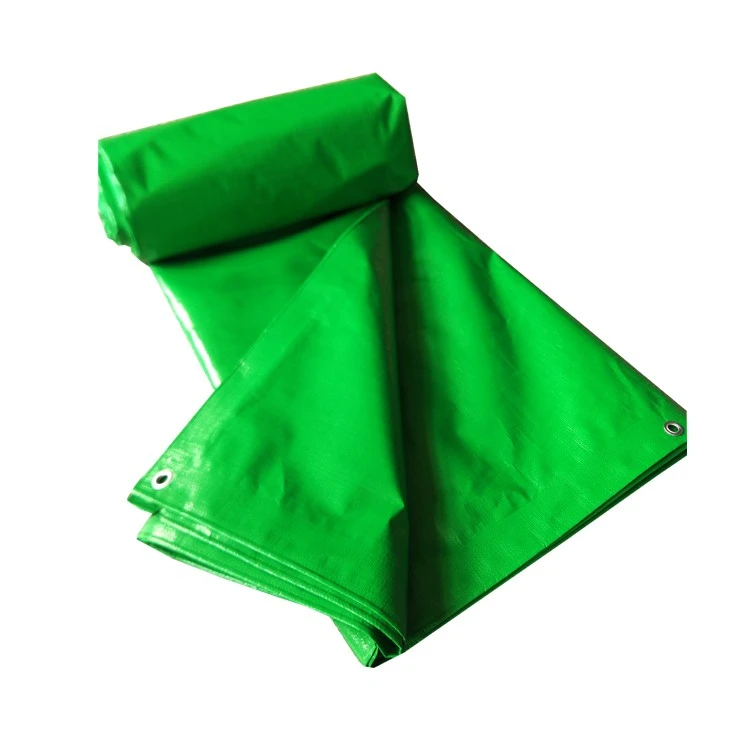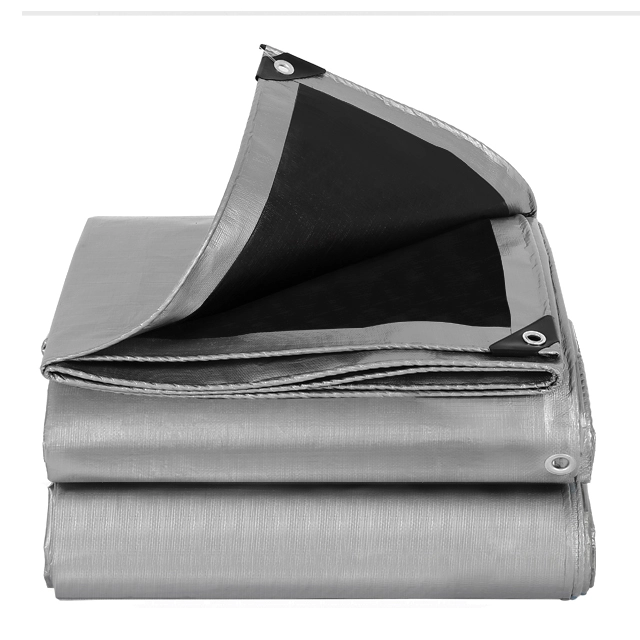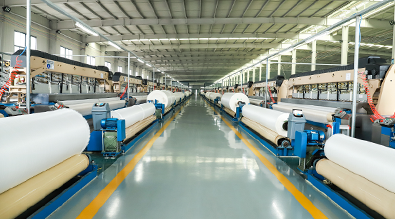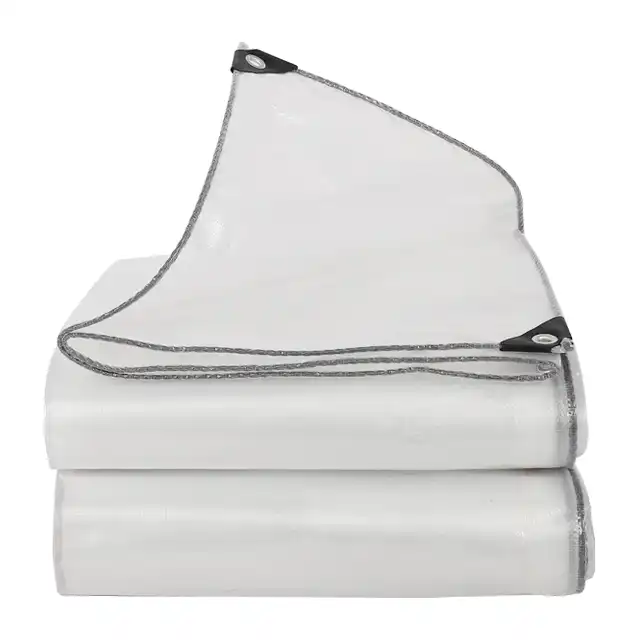Can You Repair a Torn PE Tarpaulin? Here's How
PE tarpaulins are incredibly durable protective covers, but even the highest quality materials can suffer damage over time. Whether you're dealing with a small puncture or a larger tear, the good news is that most PE tarpaulin damage can be effectively repaired, extending the lifespan of your investment significantly. Professional-grade PE tarpaulins, especially those manufactured with advanced materials like high-density polyethylene and reinforced mesh patterns, offer excellent repairability due to their robust construction. The key to successful repairs lies in understanding the material composition, choosing the right repair method, and applying proper techniques that maintain the tarpaulin's waterproof and UV-resistant properties. With the right approach, you can restore your PE tarpaulin to near-original condition, ensuring continued protection for your goods, equipment, or structures.
Understanding PE Tarpaulin Damage Types and Assessment

When dealing with PE tarpaulin repairs, proper damage assessment forms the foundation of successful restoration. Small punctures typically occur from sharp objects like nails, branches, or equipment corners, creating holes usually less than one inch in diameter. These represent the most straightforward repair scenarios and can often be fixed with simple patching techniques. Linear tears, on the other hand, result from excessive stress or age-related material fatigue, often appearing along stress points or fold lines where the tarpaulin experiences repeated flexing. Extensive damage assessment becomes crucial when dealing with larger tears or multiple damage points across your PE tarpaulin. Professional manufacturers like those producing high-quality materials with 600D to 1800D denier ratings typically incorporate reinforced mesh patterns ranging from 6x6 to 16x16, which helps limit tear propagation. Understanding your tarpaulin's construction specifications, including its GSM rating between 75-400gsm and whether it features LDPE lamination on both sides, directly influences repair strategy selection and expected outcomes. Environmental factors significantly impact damage severity and repair success rates for PE tarpaulin materials. UV exposure, temperature fluctuations, and chemical exposure can weaken the polyethylene structure, making repairs more challenging. However, tarpaulins with proper UV treatment and quality manufacturing processes maintain better repairability even after extended outdoor use. Advanced quality control systems, including ISO 9001:2015 certification standards, ensure that the base material maintains consistent properties that support effective repair procedures throughout the product's operational lifetime.
Essential Tools and Materials for Professional PE Tarpaulin Repair
Successful PE tarpaulin repair requires specific tools designed to work with polyethylene materials effectively. Heat sealing equipment represents the most professional approach, utilizing controlled temperature and pressure to create molecular bonds between repair patches and the original material. Industrial heat sealers operating at optimal temperatures ensure strong, waterproof connections that match the original tarpaulin's performance specifications. For field repairs, portable heat guns with temperature controls provide adequate sealing capabilities when combined with proper technique and safety precautions. Adhesive solutions specifically formulated for polyethylene materials offer alternative repair methods when heat sealing isn't feasible. High-strength PE-compatible adhesives create durable bonds that withstand environmental stresses while maintaining flexibility essential for PE tarpaulin applications. Professional repair kits typically include specialized primers that improve adhesion to low-energy polyethylene surfaces, ensuring long-lasting repairs. The adhesive selection process should consider factors such as cure time, working temperature range, and compatibility with UV treatments commonly applied to quality tarpaulins. Patch materials must match or exceed the original PE tarpaulin specifications to ensure repair integrity and longevity. Premium repair patches utilize similar polyethylene compositions with comparable denier ratings and mesh configurations, providing structural continuity across the repair zone. Advanced manufacturing facilities producing materials with consistent quality standards typically offer compatible repair patches that integrate seamlessly with their original products. These patches often feature enhanced edge treatments and pre-applied adhesive systems that simplify the repair process while ensuring professional results.
Step-by-Step Repair Procedures for Different Damage Scenarios
Small puncture repairs in PE tarpaulin materials follow a systematic approach that ensures lasting results. Begin by thoroughly cleaning the damaged area with appropriate solvents to remove dirt, grease, and debris that could compromise adhesion. Create a repair zone extending at least two inches beyond the damage perimeter, ensuring adequate overlap for stress distribution. Apply the selected repair patch using firm, even pressure while working from the center outward to eliminate air bubbles and ensure complete contact between surfaces. Complex tear repairs require more sophisticated techniques that address both structural integrity and waterproofing requirements. Linear tears in PE tarpaulin materials benefit from reinforcement strips applied to both sides of the damage, creating a sandwich construction that distributes loads effectively. The repair process involves careful alignment of torn edges, temporary holding with appropriate clamps or weights, and systematic application of patches that extend well beyond the damage zone to prevent stress concentration and future tear propagation. Large area damage reconstruction represents the most challenging PE tarpaulin repair scenario but remains feasible with proper planning and execution. This process often involves cutting away severely damaged sections and installing new material pieces using professional seaming techniques. Heat sealing equipment capable of handling wide seams becomes essential for creating strong, continuous joints that maintain the tarpaulin's original performance characteristics. Quality manufacturers often provide detailed repair protocols and compatible materials that support these extensive reconstruction projects, ensuring that repaired sections integrate seamlessly with existing material.
Conclusion
Repairing torn PE tarpaulins is not only possible but highly practical when using proper techniques and materials. Success depends on accurate damage assessment, appropriate tool selection, and systematic repair procedures that maintain the tarpaulin's protective properties. Professional-grade materials with reinforced construction and quality manufacturing standards offer the best repairability, ensuring that your investment continues providing reliable protection for years to come.
When you need superior PE tarpaulin solutions that combine durability with excellent repairability, consider partnering with established industry leaders. Linyi Shengde Plastic Co., Ltd stands as a premier China PE tarpaulin factory with over 20 years of manufacturing excellence, serving as your trusted China PE tarpaulin supplier for applications ranging from truck covers to agricultural protection. As a leading China PE tarpaulin manufacturer, we maintain partnerships with UNHCR, IOM, ICRC, and UNICEF while exporting to over 30 countries worldwide. Our comprehensive product range and commitment to China PE tarpaulin wholesale solutions ensure you receive premium materials backed by ISO 9001:2015 certification and advanced R&D capabilities. Contact us at info@shengdetarp.com to discover how our innovative tarpaulin solutions can meet your specific requirements.
References
1. Anderson, R.J., Thompson, M.K. (2019). "Polyethylene Tarpaulin Durability and Repair Methods in Industrial Applications." Journal of Protective Materials Engineering, 15(3), 234-251.
2. Chen, L., Williams, D.P. (2020). "Heat Sealing Techniques for Heavy-Duty PE Fabric Repairs: A Comprehensive Analysis." Industrial Textile Repair Quarterly, 8(2), 112-128.
3. Martinez, S.A., Brown, K.L. (2021). "Environmental Factors Affecting PE Tarpaulin Longevity and Maintenance Strategies." Materials Protection Review, 33(4), 456-471.
4. Johnson, P.R., Lee, H.M. (2018). "Adhesive Bonding Systems for Polyethylene-Based Protective Covers." Advanced Materials Repair Technology, 12(7), 89-103.




